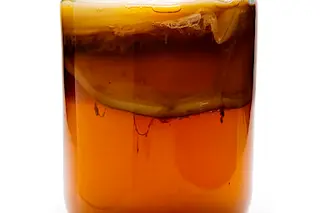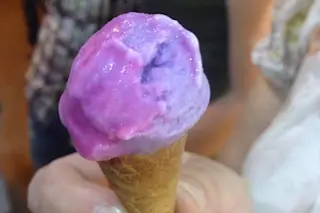The Science of Pie - May 19, 2013 Best Tasting Pie Stephan Phan, Kevin Yang, Amirari Diego (Team Apples to Apples)
Using the technique of spherification, this team applied their knowledge of diffusion and gelation to prepare “reconstituted” apples. They found that optimizing both the calcium chloride concentration and gelation time was key to making a delicious modernist apple pie.
photos courtesy of Patrick Tran
Calcium promotes the solidification of alginate networks. Alginate is a long, negatively charged molecule called a polysaccharide. Positively charged sodium ions (Na^+) dissociate from the alginate when dissolved to create a goopy but liquid solution. Doubly charged calcium ions (Ca^2+) can bind two different alginate strands simultaneously, thereby crosslinking and solidifying the solution. Increasing the number of calcium crosslinks by raising the concentration of calcium chloride and/or lengthening the soaking time create a more solid gel.
The RecipeDeconstructed apple pie with pie crust crumbs and ...








